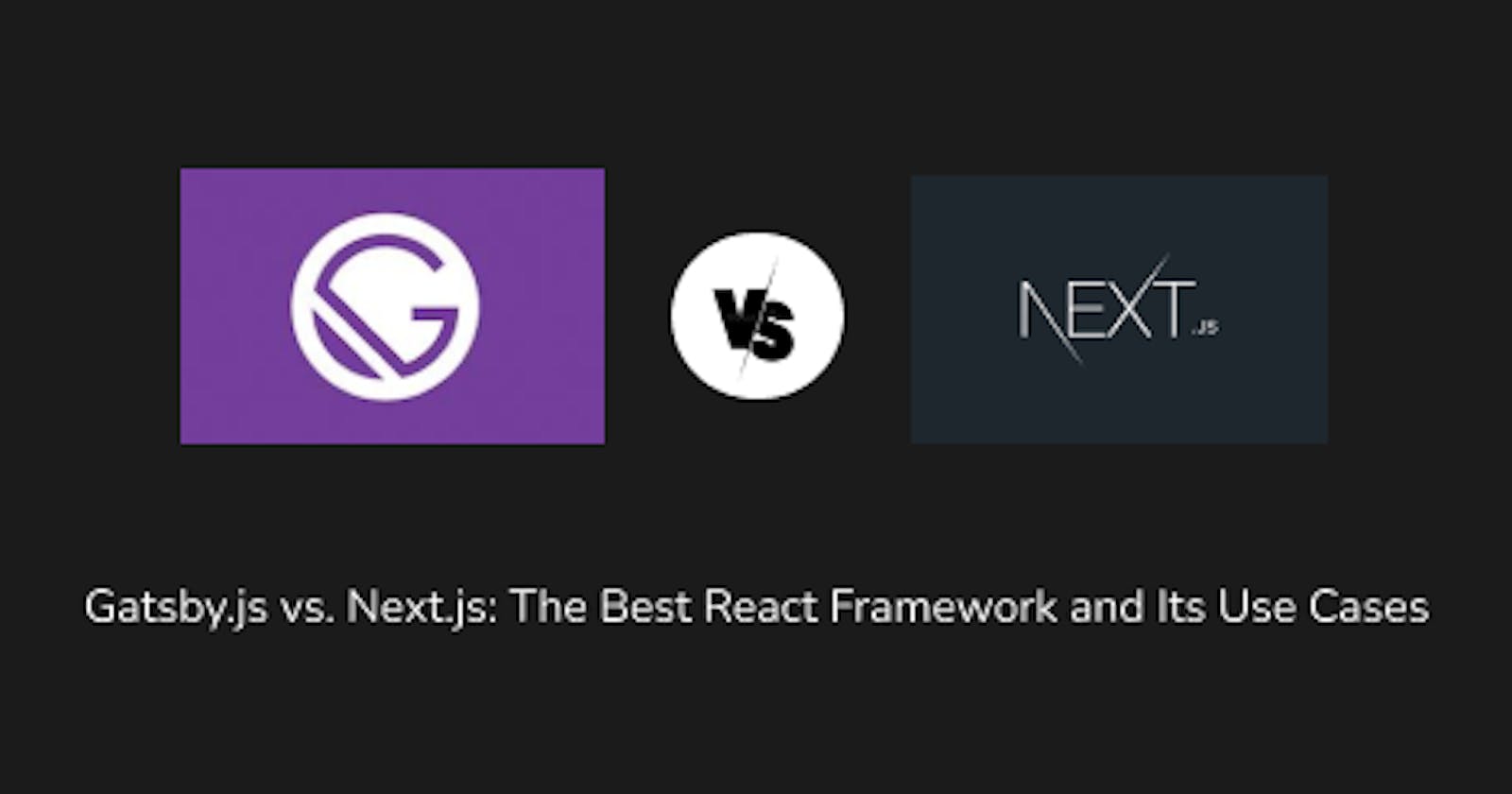In an age where websites are king and almost every brand, whether a person or organization, is obligated to have one, we as a society are driven to make owning a website as egalitarian as possible. This translates to making building web applications as easy and as efficient as possible. which is evident in the Gatsby.js vs Next.js debate.
The free and open-source JavaScript library, React, has been around since 2013, and since then, a couple of frameworks have been built for and on top of the library to make development easier. Some of these frameworks or technologies are Hugo, Gatsby.js, Next.js, Jekyll, and as we might expect, there has been a lot of debate between these technologies on which is better for creating web applications and why.
Much attention has been placed on the Gatsby.js vs. Next.js debate as they are both at the forefront of building front-end applications. This article will discuss what exactly Gatsby.js and Next.js are, their similarities, their strengths, and finally which is better to use, for what purpose, and why.
What is Gatsby.js?
Gatsby.js is a free, open-source React-based framework used to build fast and flexible web applications. It utilizes React, webpack, and GraphQL functionalities to help us build high-speed and SEO-friendly websites, and quickly too.
Although Gatsby.js has evolved, at its core, Gatsby.js has been known as a static site generating (SSG) React framework.

What is Next.js?
Next.js is a free and open-source React development framework built on node.js. Next.js used server-side rendering ( SSR ) to prerender its web pages initially until the Next.js 9.3 that introduced SSG.
So now, with Next.js, you can decide how you want to prerender your pages SSG vs. SSR.
Similarities
The Idea that there has been a lot of debate surrounding these frameworks signifies that there must have been some similarities between them, to begin with. In this part of the article, we will give examples of what these similarities are.
- They are both React frameworks.
- They are both used to build fast, high-performance, search engine optimized websites.
- They both have well-written and easy-to-understand documentation.
Gatsby.js vs Next.js
Static Site Generating ( SSG ) vs. Server-Side Rendering ( SSR )
Gatsby.js
Static site generating means creating static pages for your websites or creating static web pages in general. This means that what you see is what you get, and every piece of the website has been hard coded in, no matter how many times that component appears on the website (examples of such elements are headers, footers, etc.).
Gatsby.js has been optimized for this very purpose. In Gatsby.js, the HTML files are generated during the build phase.

Next.js
Until the Next.js 9.3 version, which incorporated Static Site Generation, Next.js solely relied on SSR to display HTML pages, which meant that HTML pages were rendered at run time every time a request from the client was sent to the server requesting for the page.
Now you can decide how you want to prerender your pages using either Static Side Generating or Server Side Rendering.

Data Handling
Gatsby.js
Gatsby.js is very opinionated when fetching data as it requires you to use GraphQL to source out information. This allows users of the web application to fetch only important data from the database, adding an extra layer of security.
Next.js
Next.js does not care how you get the data, whether asynchronously or synchronously, via fetch, Rest APIs, GraphQL, or even directly from the database.
Flexibility
Gatsby.js
Gatsby.js is an opinionated framework.
Next.js
Next.js can be more flexible than Gatsby.js as you can decide how you want to prerender your web pages, whether using Static Site Generation or Server Side Rendering. This can be especially useful when you need to scale the project in the future and do not need to commit to one presently.
Next.js also offers you the flexibility to fetch data from the database or content management system (CMS).
Gatsby.js Use Cases
Gatsby.js has its strengths, and like anything that has ever existed, it also has its weaknesses. So what are the perfect use cases for the Gatsby.js framework?
Static Websites
As discussed above, Gatsby.js is king when it comes to static websites. Static websites have complete and single HTML pages for each page.
Documentation, Personal Blogs, Personal Portfolios
Gatsby.js is great to use in cases where you don’t plan to create websites over 500 pages and do not need to serve dynamic content or plan to scale.
Next.js Use Cases
Dynamic Websites or Hybrid Websites
Dynamic websites can be thought of as having web pages that render different content with the same template. As a result, they could change or display other content depending on each viewer, time of the day, or any factor.
Hybrid Websites are a mixture of both static web pages and dynamic web pages, and as we have learned, Next.js 9.3 implements SSG, which makes Next.js the perfect choice for hybrid websites as you can choose to use either SSG or SSR to prerender your web pages.
Large multi-user websites
These kinds of websites have a lot of users, and sometimes at the same time, there is a lot of data generated and a lot of changes made to the web pages. Examples of multi-user websites built with Next.js are Uber, Netflix, etc.
Big E-commerce websites
Some big e-commerce websites have over 500 pages. In this scenario, it would be unwise to use static pages as they would be challenging to create and extremely difficult to scale.
Final Thoughts
Gatsby.js and Next.js have proven to be great alternatives to building your websites from scratch, as websites built from scratch usually have poor SEO and low performance compared to websites built with Gatsby.js or Next.js.
In this article, we discussed them in detail, their strengths, and their allure. Still, I would love to wrap it all up by saying that it all depends on what you are trying to build for static websites Gatsby.js is the way to go, and for dynamic large multi-user websites, Next.js is the way to go.
